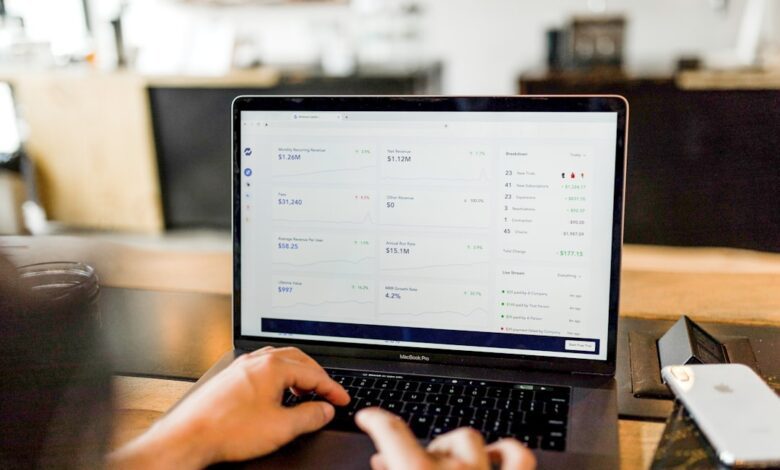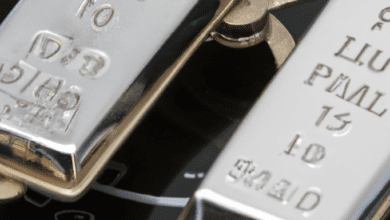Metals in Motion: Navigating the Interplay of Industry, Investment, and Sustainability

In today's rapidly evolving economic landscape, the interplay between metals and markets has become increasingly significant. From the dual role of silver as both an industrial staple and a sought-after investment vehicle to the fluctuations of copper prices that serve as pivotal indicators of global economic health, the world of metals is a dynamic space reflecting broader trends. As green energy technologies advance, the demand for rare earth metals is surging, underscoring the critical role these resources play in the transition to a more sustainable future. Additionally, the debate between investing in platinum versus palladium raises questions about market stability and potential returns.
This article delves into the multifaceted role of metals in diversifying investment portfolios, the implications of inflation on precious and industrial metal prices, and the future of aluminum in a sustainable economy. It also examines how mining regulations influence metal prices, shaping the industry's landscape. Join us as we explore these themes and uncover the vital connections between metals and the global economy.
- 1. "Silver's Dual Identity: Industrial Applications and Investment Appeal"
- 2. "Copper Prices as Economic Barometers: Understanding Global Trends"
- 3. "Green Energy Revolution: The Rising Demand for Rare Earth Metals"
1. "Silver's Dual Identity: Industrial Applications and Investment Appeal"
Silver possesses a unique dual identity that positions it as both a critical industrial material and a sought-after investment asset. In industrial applications, silver is highly valued for its exceptional electrical conductivity, thermal conductivity, and resistance to corrosion. These properties make it essential in various sectors, including electronics, solar energy, and medical applications. For instance, silver is a key component in photovoltaic cells used in solar panels, where it enhances energy conversion efficiency. Additionally, its antimicrobial properties find usage in medical devices and coatings, further expanding its industrial footprint.
On the investment side, silver is often viewed as a safe-haven asset, similar to gold, particularly during periods of economic uncertainty and inflation. Investors are drawn to silver not only for its potential price appreciation but also for its relatively lower cost compared to gold, allowing for more accessible entry points. The metal’s historical role as a store of value has solidified its appeal in diversified investment portfolios, where it can act as a hedge against currency fluctuations and economic downturns.
The interplay between silver's industrial demand and investment appeal creates a dynamic market influenced by various factors, including technological advancements and macroeconomic conditions. As industries increasingly adopt green technologies and renewable energy solutions, the demand for silver is likely to rise, potentially boosting its price and investment attractiveness. This dual identity underscores the importance of silver in both current and future market landscapes, making it a key player in discussions about resource allocation and investment strategies.
2. "Copper Prices as Economic Barometers: Understanding Global Trends"
Copper prices serve as a critical indicator of global economic health, often referred to as "Dr. Copper" due to its ability to diagnose economic trends. This metal is extensively used in various industries, including construction, electrical, and manufacturing, making its demand closely tied to economic activity. When economies are flourishing, the demand for copper tends to increase as construction projects and manufacturing output rise. Conversely, during economic downturns, demand for copper typically declines, leading to lower prices.
Analyzing copper price movements can provide insights into broader economic conditions. For instance, a spike in copper prices often signals increased industrial activity, as companies ramp up production to meet growing consumer demand. Conversely, falling prices can indicate sluggish economic conditions or reduced manufacturing output. Factors such as trade policies, geopolitical tensions, and currency fluctuations also play significant roles in shaping copper prices, amplifying their function as economic barometers.
Moreover, copper's price fluctuations can reflect supply chain dynamics. Natural disasters, labor strikes, and mining regulations can disrupt copper supply, leading to price volatility. The transition to green technologies, which require significant amounts of copper for electric vehicles and renewable energy systems, further complicates this dynamic, as it introduces new demand pressures that can elevate prices.
Investors and economists closely monitor copper price trends to gauge economic recovery, inflation expectations, and potential market shifts. Understanding these trends not only aids in investment decisions but also offers a broader perspective on the interconnectedness of global economies and industries.
3. "Green Energy Revolution: The Rising Demand for Rare Earth Metals"
The transition to green energy technologies has significantly increased the demand for rare earth metals, which are essential components in various renewable energy applications. These metals, including neodymium, dysprosium, and lithium, are crucial for manufacturing high-performance batteries, magnets, and other materials used in wind turbines, solar panels, and electric vehicles. As countries aim to meet climate goals and reduce reliance on fossil fuels, the push towards electrification and renewable energy sources has led to a surge in the production and consumption of these metals.
The electric vehicle (EV) market is a primary driver of this heightened demand. EVs require rare earth elements for their batteries and electric motors, allowing for efficient energy storage and conversion. Additionally, advancements in energy storage technologies, such as lithium-ion batteries, have further fueled the need for lithium and cobalt, both of which are often classified as rare earth metals due to their scarcity and critical applications.
Moreover, government policies and incentives promoting green energy initiatives have accelerated investments in technologies that rely on rare earth metals. As manufacturers scale up production to meet the growing needs of renewable energy sectors, the pressure on existing supply chains increases. This has raised concerns about the sustainability of rare earth metal sourcing, as the majority of these materials are mined in a limited number of countries, predominantly China.
The competition for these resources not only impacts pricing but also raises geopolitical considerations, as nations seek to secure stable supplies to support their green energy ambitions. As the global economy pivots toward sustainability, the role of rare earth metals will continue to grow, making them a critical focus for both industries and investors looking to capitalize on the green energy revolution.
In conclusion, the intricate dynamics of the metals market reveal a complex interplay between industrial demand, investment potential, and broader economic trends. Silver's unique position as both an essential industrial material and a sought-after investment asset underscores its dual identity, highlighting its importance in various sectors, including technology and renewable energy. Similarly, copper prices serve as a vital indicator of global economic health, reflecting shifts in demand driven by industrial activity and market confidence.
The green energy transition has further intensified the demand for rare earth metals, emphasizing the critical role these resources play in shaping a sustainable future. As investors weigh the merits of platinum versus palladium, understanding the unique characteristics and market factors influencing these metals will be crucial for informed decision-making.
Moreover, the role of metals in diversifying investment portfolios cannot be overstated, particularly in an era characterized by inflationary pressures that affect the prices of both precious and industrial metals. The future of aluminum, in the context of sustainability, presents further opportunities and challenges as industries strive for greener alternatives.
Finally, the impact of mining regulations on metal prices introduces an additional layer of complexity, underscoring the necessity for stakeholders to navigate both economic and regulatory landscapes. As we look ahead, the metals market will continue to evolve, driven by technological advancements, environmental considerations, and the ever-changing global economy, making it essential for investors and industry players alike to stay informed and adaptable.





